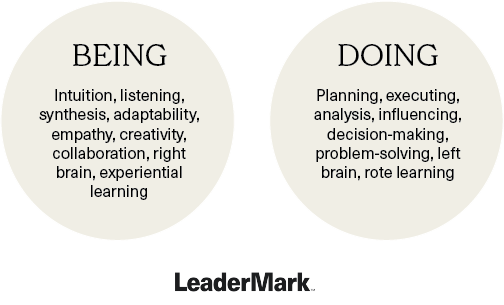Dismantling the construct of masculine and feminine skills
It’s time to Marie Kondo work culture, starting with the construct of masculine and feminine skills. I ran across an article a while ago in my LinkedIn feed about whether sounding too feminine at work can hurt you. Our aversion to femininity in the workplace is deeply problematic and detrimental to progress. Despite a more diverse workforce here in the States, masculinity is still associated with effectiveness and success whereas femininity is associated with weakness in most workplaces. Why?
The Situation Room in 2011. In 2023, the room got a $50 million makeover, and while the Cabinet is more diverse than it used to be, it still tilts heavily in one direction.
First, the workplace has historically been dominated by men, and women continue to be under-represented in leadership positions today. We know leadership significantly impacts culture and according to Forbes’ “Why everyone wins with more women in leadership”, the proportion of women in senior management roles globally grew to 32% in 2022. However, until we see more women in leadership, culture will favor the masculine.
Tech Leaders’ Dinner, also in 2011. We’ve made progress since then, and still have more to go along all lines of difference.
Second, the remnants of old male-dominant work culture continue to haunt the workplace today. Sapna Cheryan and Hazel Rose Markus in a 2022 Harvard Business Review article calls these “masculine defaults”: “a form of gender bias in which characteristics and behaviors typically associated with men are rewarded and considered standard practice.” We see this in how we invalidate certain soft skills as “too feminine”. We see this in how men and women feel like they have to sound, act, and dress at work. We see this go as far as who gets rewarded and promoted. And we see this in women putting down feminine traits in themselves and in other women. These remnants, or defaults, are so embedded in the culture - like the air we breathe, the Kool-Aid we drink - that they often go unrecognized. Yet they perpetuate a culture of exclusion and limit people, teams, and companies from reaching their fullest potential.
Photo by Paul Sahre for The Atlantic in Why do Women Bully Each Other at Work?
And while this helps explain the preference for masculine skills at work and it’s clear there’s still a problem, this entire conversation feels behind the times. We don’t live in a gender-binary world. A Pew Research Center survey found that 1.6% of U.S. adults are transgender or non-binary, meaning their gender differs from the sex they were assigned at birth. This number is increasing, along with the growing number of Americans who are using gender-neutral pronouns. The way we see it at LeaderMark, what has traditionally been categorized into masculine and feminine skills are essentially “being” and “doing” skills. We need both to maximize our potential.
What can we do?
Step into awareness: LeaderMark’s method involves four steps starting with awareness. Observe yourself and the culture. What do you notice yourself needing to be more or less masculine or feminine at work? What are people assimilating to in order to succeed? What are your sacred cows? What no longer serves the present context? Learn when you are in and out of balance and how to discern which skillset to activate for what situation.
Practice more being: We operate in a culture that values productivity at work. What would it look like to add value by being? For example, what happens when you slow down and create more space for what isn’t being said, intentional pauses, and active listening?
Scrutinize your performance management: Hold yourself, your team, and your company accountable to inclusion. Evaluate your company’s competency model. What is measured is rewarded.
Adopt new language: Changing how we talk changes culture.
Join LeaderMark’s community and mission. LeaderMark seeks to advance a more inclusive, integrated culture. Sign up for our newsletter and we’ll change culture together.
I acknowledge that we didn’t go into the equally important intersections with origin, race, etc. in this article. You’ll likely become aware of those too as you do your Marie Kondo-ing. And be patient through this process. Cultural deconditioning is transformational work from the individual to the organization. This work matters.
With you,
Jeana





